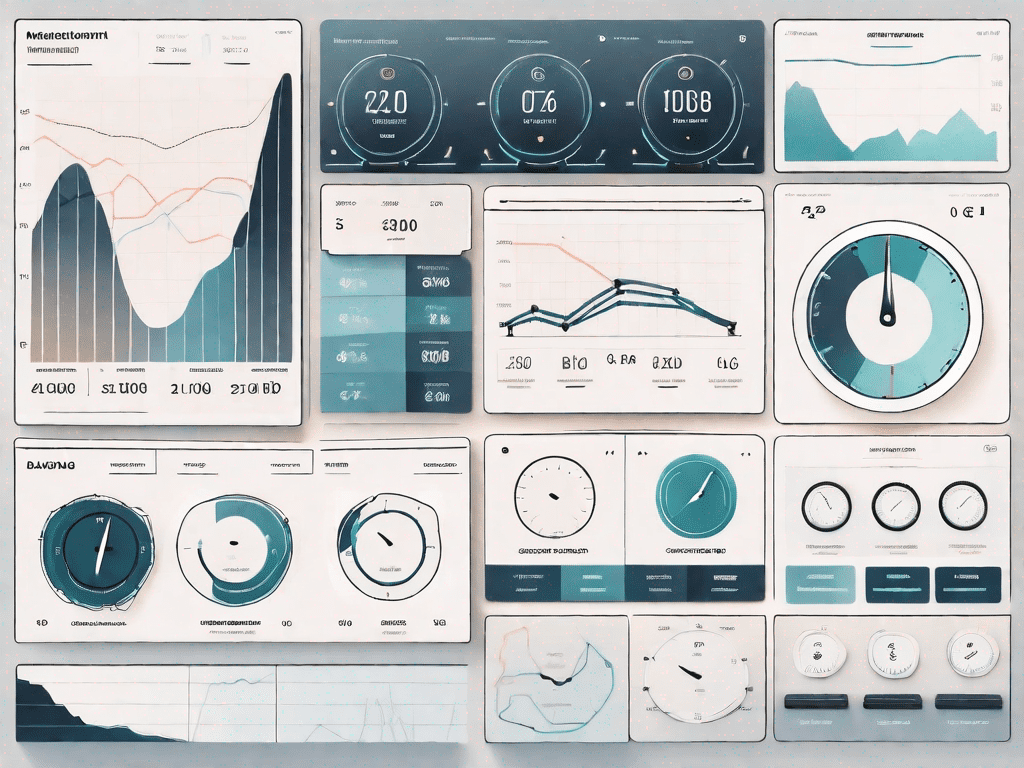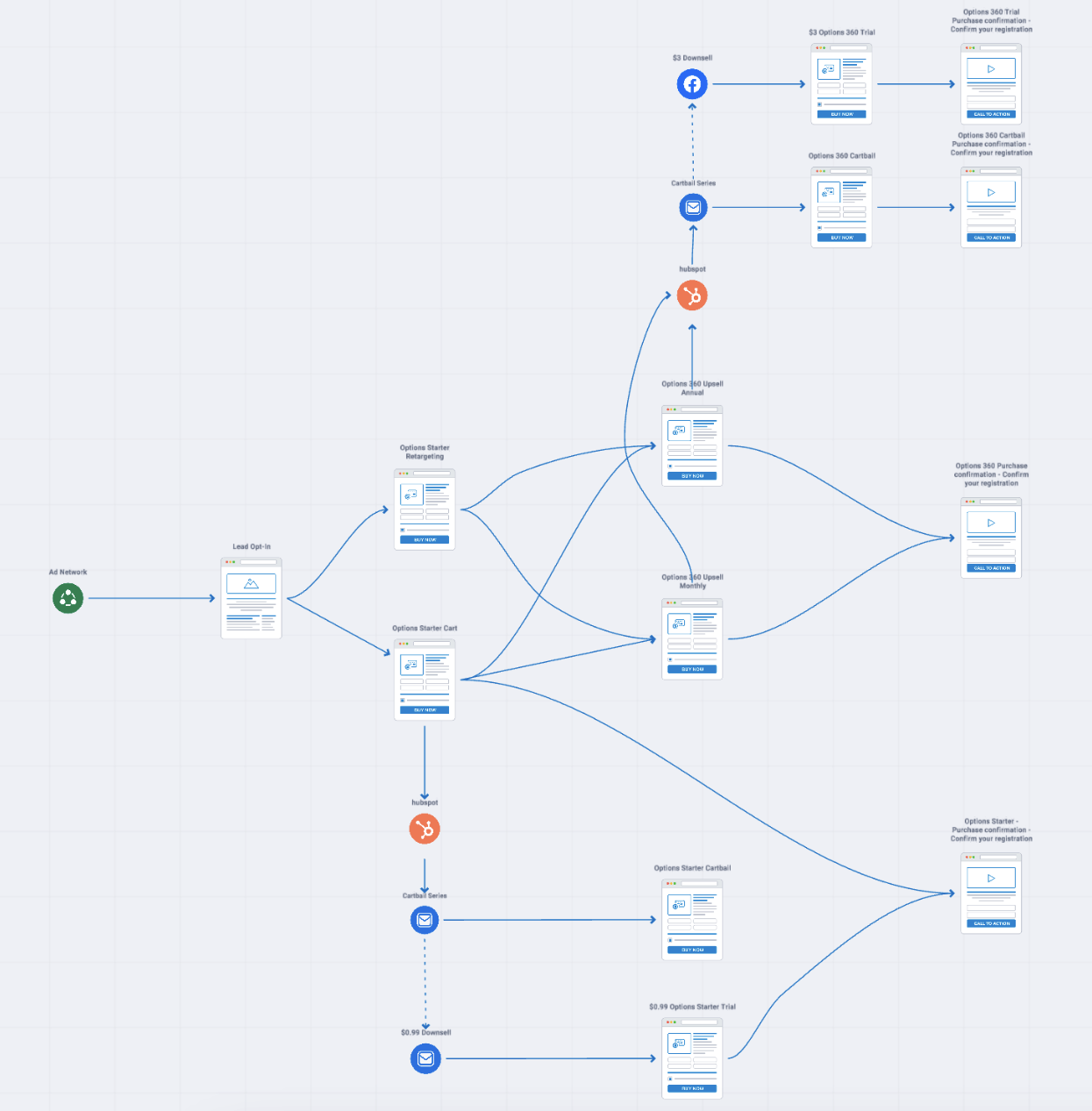In the digital marketing landscape, a well-structured PPC (Pay-Per-Click) funnel can be a game changer for businesses looking to generate highly profitable leads and conversions. Understanding the fundamentals of a PPC funnel is crucial to successfully leveraging this powerful marketing tool. This article explores the basics of a PPC funnel, key elements for success, steps to structure a profitable funnel, and strategies for maximizing profitability.
Understanding the Basics of a PPC Funnel
In order to comprehend the intricacies of a PPC funnel, it is important to first define PPC and understand its significance. PPC, short for Pay-Per-Click, is an advertising model where advertisers pay a fee each time their ad is clicked. This model allows businesses to place their ads at the top of search engine results pages, driving targeted traffic to their websites.
Defining PPC and Its Importance
PPC is an effective digital marketing strategy that offers immediate visibility and immediate results. With PPC, businesses only pay when their ads are clicked, making it a cost-effective approach to reaching potential customers. PPC provides businesses the opportunity to target ads based on specific keywords, demographics, and locations, ensuring that their message is reaching the right audience.
When it comes to understanding the importance of PPC, it is crucial to recognize the power of online advertising. In today’s digital age, consumers are constantly bombarded with advertisements from various sources. However, PPC stands out from the crowd due to its ability to deliver targeted ads to a specific audience. By leveraging PPC, businesses can effectively reach their desired customer base, increasing the chances of generating leads and driving conversions.
Moreover, PPC offers businesses the flexibility to control their advertising budget. Unlike traditional advertising methods, where businesses have to pay a fixed amount regardless of the results, PPC allows advertisers to set a budget and only pay when their ads are clicked. This level of control ensures that businesses are getting the most out of their advertising investment.
The Concept of a Sales Funnel in PPC
Now, let’s dive into the concept of a sales funnel in the context of PPC. A sales funnel is a marketing model that illustrates the journey a prospect takes from the initial point of contact with a business to the final conversion. In PPC, the funnel is divided into different stages, each with a specific goal in mind, ultimately leading to a profitable conversion.
The first stage of the PPC funnel is the awareness stage. At this stage, the goal is to create awareness about the business and its offerings. Advertisers use targeted keywords and compelling ad copy to capture the attention of potential customers. By appearing at the top of search engine results pages, businesses can increase their visibility and attract users who are actively searching for products or services related to their industry.
Once the awareness stage is complete, the next stage is the consideration stage. In this stage, the goal is to nurture the leads generated in the previous stage and guide them towards making a purchase decision. Advertisers use remarketing techniques to re-engage with users who have shown interest in their ads but have not yet converted. By displaying personalized ads to these users, businesses can remind them of their offerings and encourage them to take the next step.
The final stage of the PPC funnel is the conversion stage. At this stage, the goal is to convert leads into paying customers. Advertisers optimize their landing pages and call-to-action buttons to make the conversion process as seamless as possible. By providing a clear value proposition and addressing any potential concerns or objections, businesses can increase the likelihood of conversion.
It is important to note that the PPC funnel is not a linear process. Users can enter the funnel at any stage and move back and forth between stages depending on their level of interest and engagement. Therefore, it is crucial for businesses to continuously monitor and optimize their PPC campaigns to ensure maximum effectiveness.
Key Elements of a Successful PPC Funnel
Building a successful PPC (Pay-Per-Click) funnel requires careful consideration and strategic planning. It involves a series of steps and elements that work together to drive targeted traffic and convert visitors into leads or customers. Here are three key elements that are critical to the success of your PPC funnel:
Landing Pages and Their Role
Landing pages play a vital role in the PPC funnel. These pages are specifically designed to convert visitors into leads or customers. A well-optimized landing page provides a clear and compelling call-to-action, concise information, and a visually appealing design. It is the first point of contact for your potential customers after they click on your ad.
When designing a landing page, it is important to consider the user experience. The page should load quickly and be easy to navigate. It should also be mobile-friendly, as an increasing number of users access the internet through their smartphones and tablets. By providing a seamless and user-friendly experience, you can increase the chances of visitors taking the desired action, whether it’s making a purchase, filling out a form, or subscribing to a newsletter.
Furthermore, personalization can greatly enhance the effectiveness of your landing pages. By tailoring the content to match the specific needs and interests of your target audience, you can create a more engaging and persuasive experience. This can be achieved through dynamic content, such as personalized offers or recommendations based on the user’s previous interactions with your website or ads.
Importance of Ad Copy and Keywords
The ad copy and keywords you choose are instrumental in driving targeted traffic to your landing pages. Crafting persuasive ad copy that resonates with your target audience is crucial. Your ad should clearly communicate the value proposition of your product or service and entice users to click on it.
Additionally, selecting the right keywords ensures that your ads are shown to the right people at the right time. Thorough keyword research and continuous optimization are key to refining your PPC campaigns and maximizing their effectiveness. By identifying high-performing keywords and eliminating underperforming ones, you can improve the relevancy of your ads and increase your click-through rate.
It is important to regularly monitor and analyze the performance of your ad campaigns. By tracking key metrics such as click-through rate, conversion rate, and cost per conversion, you can identify trends and patterns that can inform your optimization efforts. This data-driven approach allows you to make informed decisions about your ad copy and keyword selection, ultimately improving the overall performance of your PPC funnel.
Role of Conversion Tracking in a PPC Funnel
Conversion tracking is a vital component of a successful PPC funnel. It allows you to measure the effectiveness of your campaigns by tracking user actions such as purchases, sign-ups, or downloads. By implementing conversion tracking, you can gain valuable insights into the performance of your landing pages, ads, and keywords.
Conversion tracking enables you to attribute conversions to specific campaigns, ad groups, or keywords. This information is crucial for understanding which aspects of your PPC funnel are driving the most conversions and which ones may need improvement. By analyzing conversion data, you can identify the strengths and weaknesses of your funnel and make data-driven decisions to optimize your PPC strategy.
Furthermore, conversion tracking can help you identify and address potential issues in your funnel. For example, if you notice a high bounce rate on a particular landing page, it may indicate that the page is not effectively engaging visitors or meeting their expectations. By identifying and addressing these issues, you can improve the overall conversion rate of your PPC funnel.
In conclusion, a successful PPC funnel requires careful attention to various elements. By optimizing your landing pages, crafting persuasive ad copy, selecting the right keywords, and implementing conversion tracking, you can create a highly effective PPC funnel that drives targeted traffic and converts visitors into leads or customers.
Steps to Structure a Profitable PPC Funnel
Now that you understand the importance of a PPC funnel and its key elements, let’s dive into the steps involved in structuring a profitable funnel:
Identifying Your Target Audience
The first step in building a successful PPC funnel is to identify your target audience. Understanding who your ideal customers are and what drives them is essential for creating compelling ad campaigns that resonate with your audience. Conduct thorough market research and use tools like Google Analytics to gain insights into your audience’s demographics, interests, and online behaviors.
Creating Compelling Ad Copies
Once you have a clear understanding of your target audience, it’s time to create compelling ad copies that capture their attention and entice them to click on your ads. Craft ad copies that highlight the unique selling points of your product or service, incorporate persuasive language, and align with the needs and desires of your target audience.
Optimizing Landing Pages for Conversion
Your landing pages play a critical role in converting your PPC traffic into valuable leads or customers. Optimize your landing pages to align with your ad copies, ensuring a seamless and consistent user experience. Make sure your landing pages load quickly, have clear and concise messaging, and incorporate persuasive elements such as testimonials or social proof.
Setting Up Conversion Tracking
To measure the success of your PPC campaigns and determine the ROI, setting up conversion tracking is imperative. Implement tracking codes on your thank you pages or confirmation pages to monitor the actions that visitors take after clicking on your ads. This data will allow you to refine your campaigns and make data-driven decisions to improve your funnel’s performance.
Strategies for Maximizing PPC Funnel Profitability
Now that you have a well-structured PPC funnel in place, it’s time to explore strategies that can maximize the profitability of your campaigns:
Effective Keyword Bidding Strategies
Bidding on keywords requires a strategic approach to ensure you are getting the most out of your PPC budget. Consider using a combination of broad match, phrase match, and exact match keywords to maximize your reach and target the right audience. Continuously monitor and optimize your keyword bids, adjusting them based on performance and competition.
Utilizing Remarketing Techniques
Remarketing is a powerful technique that allows you to target users who have previously visited your website but did not convert. By displaying tailored ads to these users as they browse the web, you can remind them about your offerings and bring them back into your funnel. Implementing dynamic remarketing, where you showcase specific products or services that users have shown interest in, can further enhance your conversion rates.
Optimizing for Mobile Users
With the increasing prevalence of mobile devices, optimizing your PPC campaigns for mobile users has become essential. Ensure that your landing pages are mobile-friendly, with responsive design, easy navigation, and fast load times. Mobile-specific ad copy and call-to-action buttons can also enhance the user experience, leading to higher conversions.
In conclusion, structuring a highly profitable PPC funnel requires a strategic approach, careful planning, and continuous optimization. By understanding the basics of a PPC funnel, focusing on key elements such as landing pages, ad copy, and conversion tracking, following the steps to structure a profitable funnel, and implementing strategies for maximizing profitability, businesses can unlock the full potential of PPC advertising and achieve their marketing goals.



